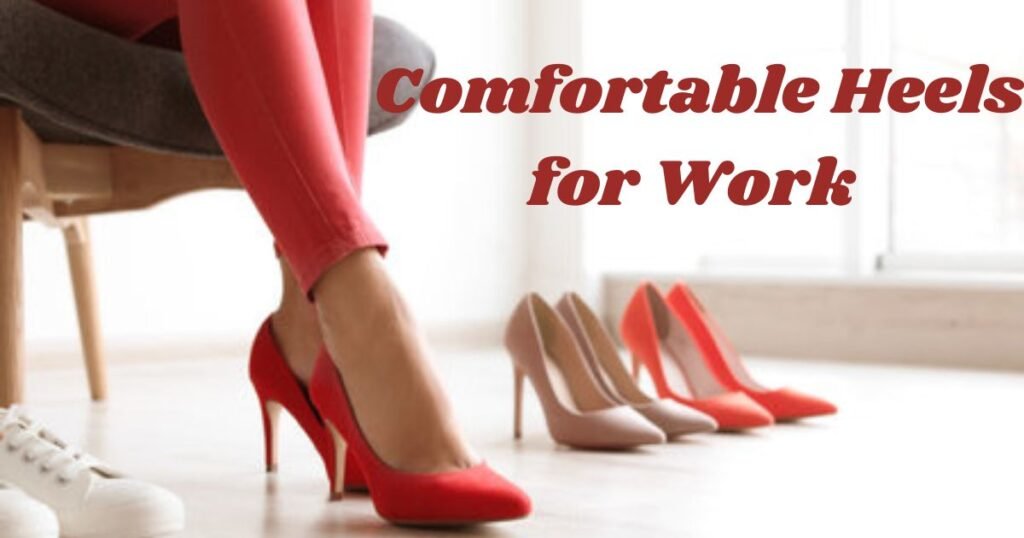
Finding the perfect pair of comfortable heels for work can feel like a daunting task. With so many options available, it’s easy to prioritize style over comfort—only to regret it hours into your workday. But what if you could have both? Using this guide you will learn to choose the right heel, which looks amazing when it is used professionally, but it also prevents pain in your feet throughout the day.
Why Comfort Matters in Work Heels
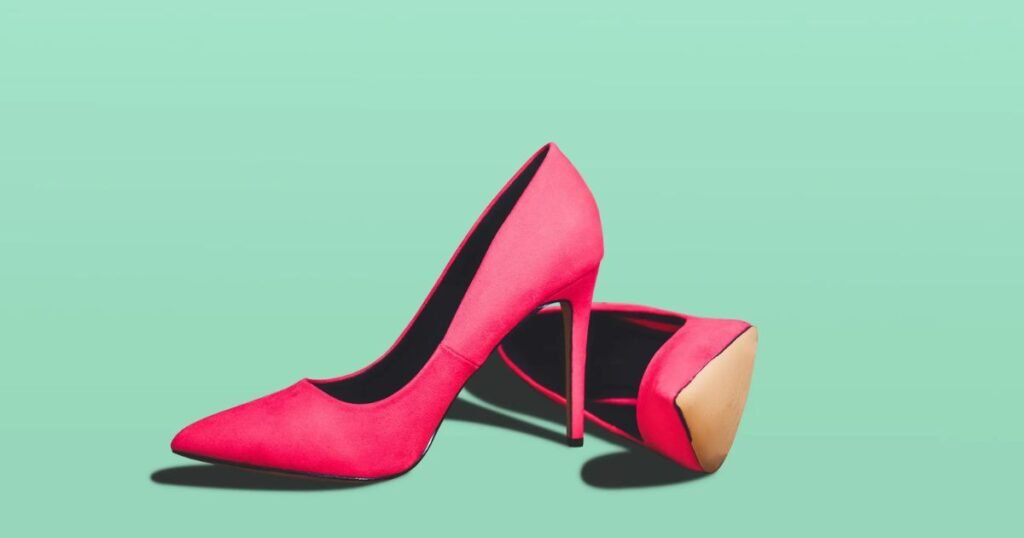
Using painful stilettos at the workplace is not only uncomfortable; it can result in painful feet, blisters, and posture-related problems over the long term. Considering that most professionals spend 8 to 10 hours at work daily, investing in comfortable heels for work is a step toward better health and productivity.
Key Benefits of Comfortable Heels for Work:
- Reduced foot fatigue and pain.
- Improved posture and balance.
- Enhanced confidence and focus.
- Better long-term foot health.
Since we know that comfort is key, here’s, on second thought, how to select the exact pair for most of your needs.
Step 1: Understand Your Foot Type
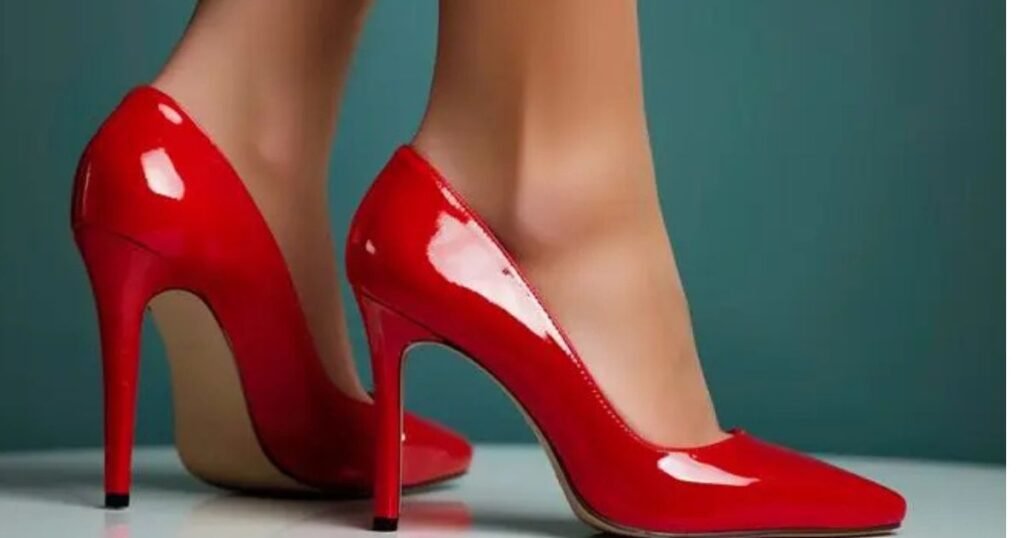
Finding comfortable heels for work is the first step of working out foot type. Every individual has anatomically specific feet and knowing what fits the shape of feet and arch type can help choose the right fitting shoes.
How to Determine Your Foot Type:
- Flat Feet: Look for shoes with arch support to prevent overpronation.
- High Arches: Choose cushioned insoles to provide shock absorption.
- Wide Feet: Pick a heel with a wider toe box in order to avoid toe pain.
Get to a podiatrist and have a wet foot test applied to identify your foot type. This will consequently limit the number of decisions to be taken.
Step 2: Prioritize Heel Height
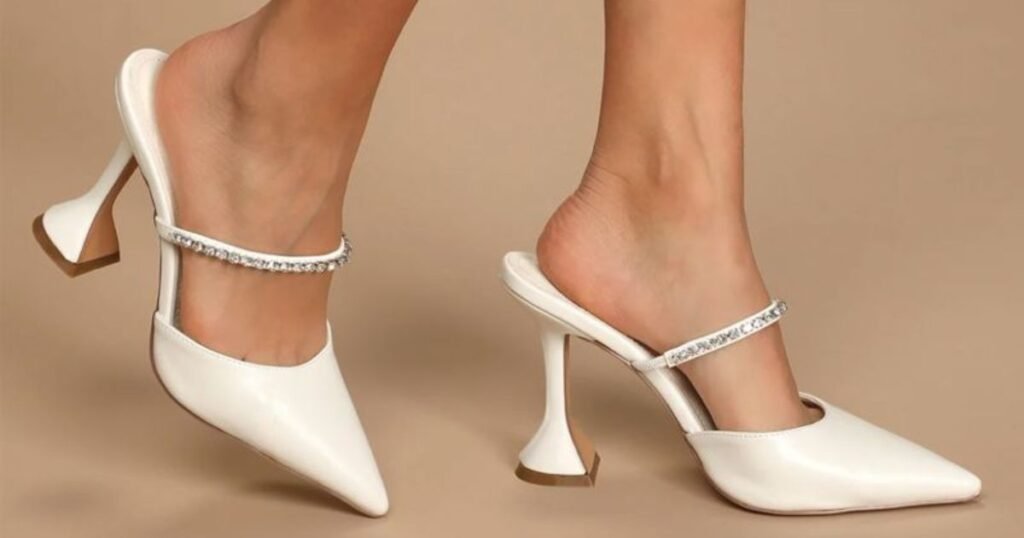
Heel height plays a significant role in comfort. While high heels may appear very elegant, this is not the case all the time when it comes to a workday.
Recommended Heel Heights for Work:
- Low Heels (1-2 inches): (Very) adjustable for everyday use and also causing relatively small stress on feet.
- Mid Heels (2-3 inches): Stylish enough to work with at most jobs.
- Block Heels: These are balanced equally and more stable than heels.
During standing and/or walking for extended periods of time, prevent heels that rise greater than 3 in.
Step 3: Choose the Right Materials

The material of your heels can greatly affect comfort. High-quality materials not only have a longer life but also conform to the shape of a person’s feet and thus have a better fit.
Best Materials for Comfortable Heels:
- Leather: Durable and breathable, making it a top choice.
- Suede: Soft and flexible, offering a snug fit.
- Memory Foam Insoles: Provide cushioning and reduce pressure points.
Do not use synthetics that do not allow your feet to breathe, as they can lead to dissatisfaction and sweating.
Step 4: Look for Supportive Features
Comfortable heels for work should come with specific features designed to support your feet and enhance stability.
Key Features to Look For:
- Cushioned Insoles: Reduce impact and provide all-day comfort.
- Arch Support: Essential for maintaining proper foot alignment.
- Non-Slip Soles: Prevent slips and falls, especially on smooth office floors.
- Wide Toe Box: Freestyle of toes for natural toe vibratory feedback, a risk factor of buniones.
- For increased security, adjustable straps provide a customizable fit.
Step 5: Consider Style Without Compromising Comfort
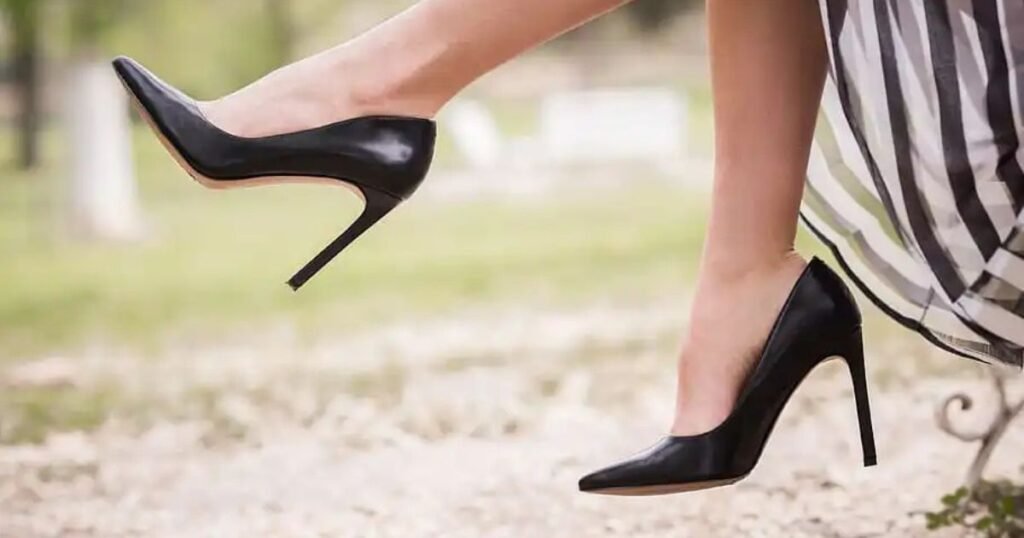
Comfort is king, but you don’t have to neglect appearance. Numerous brands provide both fashionable and functional heels.
Stylish Yet Comfortable Options:
- Kitten Heels: A classic choice that’s easy to walk in.
- Slingbacks: The secure fit and a touch of sophistication.
- Wedges: Height and stability allow them to be suitable for everyday rush.
Step 6: Try Before You Buy
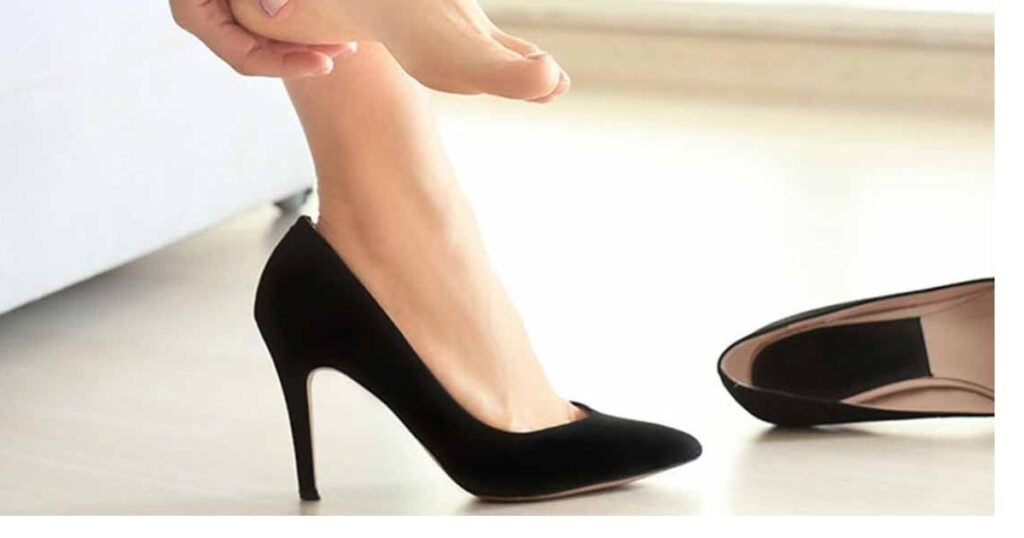
Do not underestimate shoes’ necessity of a prior fitting. Feet can change over a period of time, and it is thus critical to assess the fit and comfort on occasion.
Tips for Trying on Heels:
- Shop in the Afternoon: As the footprint remains in shape and enlarges during the day, this configuration is assured to fit properly.
- Walk Around: Test the walking mechanisms of the foot landing on various surfaces in terms of the stability of the heels.
- Check the Fit: It should be space enough for the toes, and no sliding heels in walking.
- Wear Work Socks or Tights: If hosiery is to be worn, please bring it so that an accurate fit can be achieved.
Step 7: Break Them In
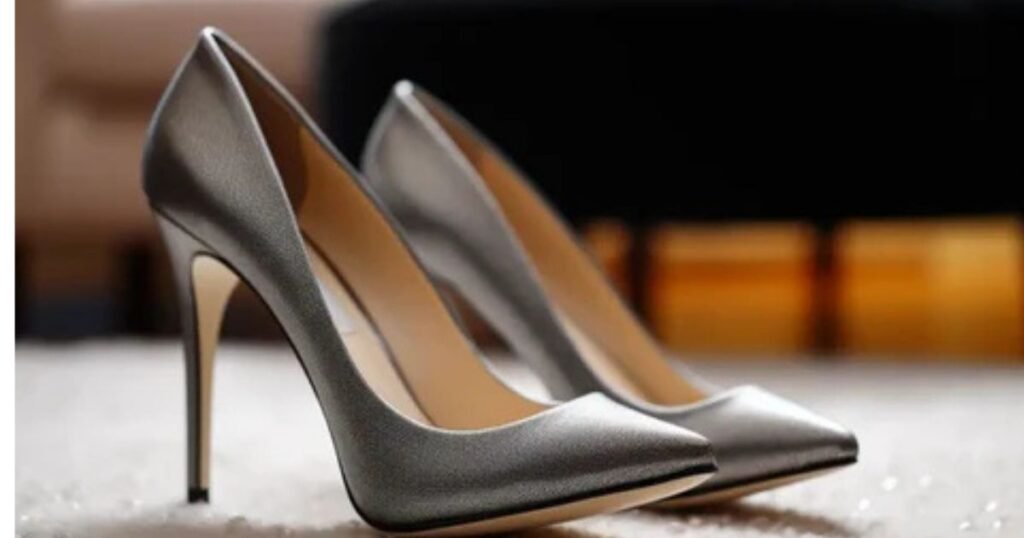
Comfortable heels can still require some wearing in. In this technique, the shoes can better be fitted to the foot and should provide pain relief.
How to Break In New Heels:
- Wear Them Around the House: Start with short periods to get used to them.
- Use a Shoe Stretcher: Shoe tightness can be alleviated by giving them a looseness.
- Apply Blister Pads: Protect sensitive areas until the shoes soften.
- Bend and Flex: Work the shoes gently to increase their pliability.
Step 8: Maintain Your Heels
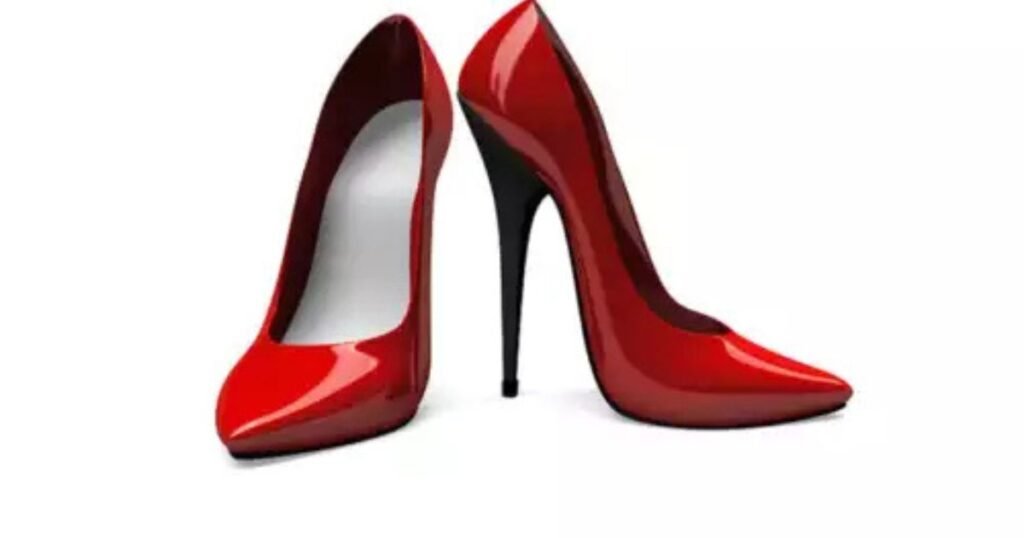
Proper attention to care will prolong the lifetime of your heels and maintain heel comfort.
Maintenance Tips:
- Clean Regularly: Wipe down leather or suede with appropriate cleaners.
- Replace Insoles: Replace old insoles with new insoles with extra cushioning.
- Resole When Needed: A cobbler can repair shoes’ wear and tear, to improve traction and comfort, respectively.
- Store Properly: Use shoe trees or stuffing to maintain the shape.
Top Brands for Comfortable Heels for Work
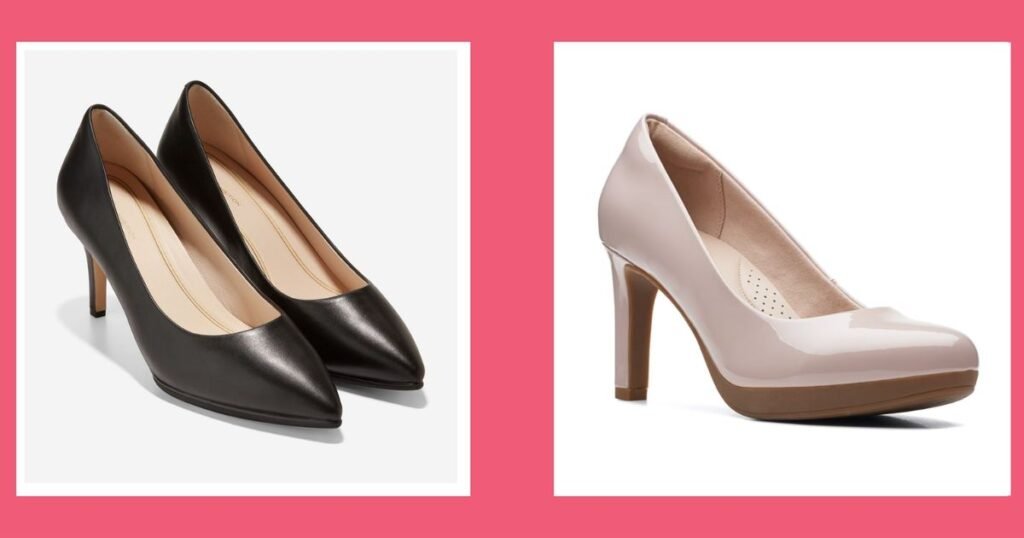
- Clarks: Renowned for ergonomic designs and cushioned soles.
- Naturalizer: Combines style with advanced comfort technology.
- Cole Haan: Offers elegant designs with supportive features.
- Ecco: Focuses on quality materials and foot-friendly designs.
- Rockport: Specializes in heels with athletic shoe comfort.
Conclusion
It need not be hard to figure out Comfortable heels for work that are appropriate for the office. So, with information about what type of foot you have, concerning heel height, and be on the lookout for supportive features, you will be able to find a pair that gives you style and comfort. Remember to try before you buy, break in your heels, and maintain them for long-lasting wear. Wearing the right pair of heels can make you feel, Comfortable heels for work and well up for your workday.
It’s more than just a fashion decision to invest in the right pair of ergonomic heels for the office, there is a direct path to greater health and productivity. Keep the below and heel wear tips and you’ll have nothing to fear putting on heels at work ever again.
FAQs
1. What heel height is best for work?
Elbow-height and mid-heel (1-3 cm) heels are acceptable for work. They give comfort and stability without compromising flair.
2. How can I make my heels more comfortable?
Wear cushioned insoles, wear “wide-toe” types, and wear heels for a time before “using” them long term. Adjusting straps and wearing blister pads can also help.
3. Are block heels better than stilettos for work?
Yes, also block heels offer higher stability (the load is better distributed), and thus it is more Comfortable heels for work to wear in continuous wear.

